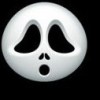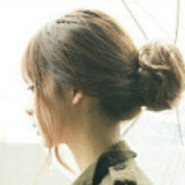Q
How many Litres per 100km is a Toyota Hilux?
The fuel consumption of the Toyota Hilux varies depending on factors such as model, configuration, driving habits, and road conditions. Taking the 2023 models as an example, the official combined fuel consumption of the Toyota Hilux GR Sport 2.8 AT is 8.5L/100km, and that of the 2023 Hilux Double Cab 2.8 Rogue AT 4WD is 10.2L/100km.
Generally speaking, some older versions consume approximately 7.6 liters per 100 kilometers. Due to factors like additional driven wheels and higher curb weight, the Hilux 6x6 consumes about 30 liters per 100km, with even higher consumption during off-road driving. The new-generation models equipped with a 48V mild hybrid system show significant fuel efficiency improvements. Facelifted models featuring this system achieve a 6% to 10% reduction in fuel consumption, with combined consumption ranging from 7.2L to 7.8L/100km. Standard models have a combined fuel consumption range of 7.1L-11.1L/100km. In real-world driving conditions, actual fuel consumption is further influenced by driving habits and road conditions. During highway driving, consumption can drop below 7L/100km.
Special Disclaimer: This content is published by users and does not represent the views or position of PCauto.
Related Q&A
Q
Is a 2018 Hilux reliable?
The 2018 Toyota Hilux has built a solid reputation in Malaysia for its reliability and durability. Under the hood, you'll find either a 2.4-liter or 2.8-liter turbocharged diesel engine—proven powertrains that deliver consistent performance, easily handling Malaysia's diverse road conditions whether you're navigating city streets or tackling rough rural tracks. The Hilux's tough chassis and practically tuned suspension can handle heavy loads, making it a great fit for both work and family use. Toyota's extensive after-sales network across Malaysia means maintenance is a breeze with readily available parts, really enhancing the long-term ownership experience. On top of that, the Hilux holds its value well in the used car market, a clear sign that buyers trust its quality. If you're in the market for a tough pickup with reasonable running costs, the 2018 Hilux is definitely worth a look. Of course, when buying used, it's always smart to check the service records and actual condition to make sure it performs as expected.
Q
What kind of engine is in the 2018 Toyota Hilux SR5?
The 2018 Toyota Hilux SR5 is powered by the 2GD-FTV 2.4-liter turbocharged diesel engine. This four-cylinder diesel unit features common rail direct injection and a variable geometry turbocharger (VGT), pushing out 150 horsepower (110 kilowatts) and 400 Newton-meters of torque. Paired with a 6-speed automatic or manual transmission, it strikes a solid balance between performance and fuel efficiency, making it a great fit for Malaysia's diverse driving conditions – think city commutes and light off-roading. Part of Toyota's GD engine family, this powerplant is known for its reliability and low maintenance costs, while also meeting the strict emissions standards of its time. What really stands out is the diesel's strong low-end torque, which makes the Hilux shine when hauling loads or climbing hills. Toyota's D-4D technology also helps optimize combustion efficiency and keep carbon buildup in check. For Malaysian drivers who often hit the highway or need serious load-carrying capability, this powertrain is a practical choice. Plus, Toyota's well-established after-sales service network locally adds to the overall convenience of ownership.
Q
What is the fuel consumption of the 2018 Toyota Hilux?
The fuel efficiency of the 2018 Toyota Hilux varies depending on engine configuration and driving conditions. Models equipped with the 2.4-liter turbo diesel engine (2GD-FTV) have a combined fuel consumption of approximately 7.5 to 8.0 liters per 100 kilometers, while the 3.0-liter turbo diesel version (1KD-FTV) is slightly higher, around 8.0 to 8.5 liters per 100 kilometers. Actual fuel consumption may fluctuate based on load, road conditions, and driving habits. For Malaysian users, the Hilux's diesel engine design is well-suited to local needs of mountainous roads and long-distance driving, with its low-rev high-torque characteristics maintaining fuel efficiency when climbing hills or carrying cargo. To further optimize fuel consumption, it is recommended to perform regular maintenance (such as cleaning the air filter and maintaining proper tire pressure) and adopt a smooth acceleration driving style, avoiding sudden braking and rapid starts. As a popular model in the pickup truck market, the Hilux's durability and fuel economy have always been among the reasons favored by Malaysian consumers. Additionally, Toyota's after-sales network across the country provides convenient maintenance support for owners.
Q
What is the fuel economy of the 2018 Hilux?
The fuel economy of the 2018 Toyota Hilux in the Malaysian market varies depending on specific configurations and driving conditions. According to official figures, the 2.4L diesel variant delivers a combined fuel consumption of approximately 7.5-8.0 liters per 100 kilometers, while the 2.8L diesel model sits around 8.0-8.5 liters per 100 kilometers. Actual fuel usage may fluctuate based on load, road conditions, and driving habits. As one of Malaysia's most popular pickup trucks, the Hilux offers a balanced fuel economy within its segment, striking a good compromise between power and practicality. Notably, the diesel engine's low-end torque characteristics make it particularly suitable for users who frequently carry heavy loads or drive long distances, and Toyota's D-4D common rail technology also helps enhance combustion efficiency. It's advisable for owners to regularly maintain the engine and replace air filters to keep fuel consumption optimal, and try to maintain a smooth driving style. For those seeking better fuel economy, consider subsequent facelift models with more advanced powertrains, but the overall reliability of the 2018 Hilux has been widely proven in Malaysia's diverse terrain.
Q
Is the 2018 Hilux good for families?
The 2018 Toyota Hilux, as a pickup truck, excels in hauling and off-road capabilities, but there are some factors to weigh for daily family use. It boasts a tough body structure and reliable powertrain, with 2.4L or 2.8L diesel engines that handle long drives and rough terrain well. However, as a family vehicle, its rear-seat comfort can't match traditional SUVs or MPVs—those seats are pretty upright, which might get tiring on longer trips. Also, the back seat space is on the tight side; if you've got a bigger family or need to fit child safety seats, it could feel cramped. On the flip side, its high ground clearance and strong cargo capacity make it great for families into outdoor stuff, like camping or hauling lots of gear. If family comfort is your top priority, the brand's Innova or Fortuner might be better picks—they're more tailored for family needs. All in all, the 2018 Hilux is a solid choice if you need something that handles both work and light family use, but for purely family-focused driving, you might want to go with a more comfort-oriented model instead.
Q
What is a 2018 Hilux?
The 2018 Hilux is Toyota's eighth-generation Hilux pickup truck, a hit in Malaysia thanks to its toughness, off-road chops, and practicality. Under the hood, you'll find either a 2.4L or 2.8L turbo diesel engine, delivering solid power and decent fuel economy—perfect for everything from city cruising to backcountry adventures. Its generous ground clearance and part-time 4WD system make it a beast in Malaysia's rainy, muddy conditions. Inside, the focus is on usability, with a multifunction steering wheel and touchscreen infotainment system blending comfort and tech. Safety-wise, it comes with ABS, EBD, and multiple airbags. Malaysians love using the 2018 Hilux for commercial hauling, family trips, or even kitting it out as an off-roader, making it one of the best-selling pickups locally. Toyota offers various trims to suit different needs, and its reputation for reliability and strong resale value makes it a smart bet for long-term ownership.
Q
Does a 2018 Hilux have a timing belt or chain?
The 2018 Toyota Hilux comes with a timing chain instead of a timing belt, a design that offers better durability and lower maintenance costs. Unlike timing belts, which need regular replacement, timing chains generally just require periodic checks on lubrication – a real plus for Malaysian owners who tackle all sorts of road conditions. Chains hold up better under heavy loads and long hours of use, especially in tropical climates where their metal construction handles heat and humidity more reliably. Sure, timing chains might be a bit noisier at first, but they last way longer and eliminate the risk of catastrophic engine damage if a belt snaps. For a tough, reliable pickup like the Hilux, a timing chain makes total sense. Just stick to the manufacturer’s recommended maintenance schedule for checks, and your engine should keep running strong for the long haul.
Q
How long is the 2018 Hilux?
The 2018 Toyota Hilux measures 5330mm in length (including the rear bumper) with a 3085mm wheelbase, giving it solid practicality and road presence in the pickup segment. It’s a great fit for Malaysia’s diverse road conditions, handling both city drives and rural hauling with ease. As one of the most popular pickups in Southeast Asia, the Hilux has built a strong reputation for durability and off-road capability. The 2018 model comes with either a 2.4-liter or 2.8-liter turbo diesel engine, balancing power and fuel efficiency nicely. The cargo bed is around 1.5 meters long and nearly 1.6 meters wide, which covers most hauling needs, and the leaf spring rear suspension ensures it can handle heavy loads without breaking a sweat. For Malaysian buyers, there’s also a 4x4 version that tackles muddy monsoon roads or hilly terrain like a pro. On top of that, maintenance costs are reasonable, and the local after-sales service network is pretty well-established.
Q
Is the 2018 Hilux good for off-roading?
The 2018 Toyota Hilux delivers impressive off-road performance in Malaysia, making it a great fit for the country's diverse terrain. Under the hood, you've got reliable 2.4L or 2.8L turbo diesel engines that pump out plenty of low-end torque. Pair that with the part-time 4WD system and generous ground clearance, and it handles mud, sand, or steep slopes like a breeze. The rear differential lock ups the ante for getting out of sticky situations, while the tough ladder frame and suspension setup ensure it can take a beating on rough trails. Malaysian owners will also love the Hilux's modification potential – slap on a snorkel, beefy off-road tires, or underbody skid plates to dial up the off-road capability even more. Now, don't get me wrong, the Hilux is a beast off-road, but driver skill and route choice matter just as much. If you're into off-roading, I'd recommend signing up for proper training and keeping a close eye on key components like the drivetrain and brakes to stay safe out there. And with Malaysia's tropical weather, make sure you're extra diligent with maintaining the engine cooling system and electronics – that heat and humidity can really take a toll on your ride.
Q
What is a 2018 Toyota worth?
The price of a 2018 Toyota in Malaysia's used car market depends on factors like the specific model, mileage, condition, and specifications. Generally, popular models such as the Corolla Altis or Hilux command higher prices, ranging from around RM70,000 to RM120,000 for those in good condition. Mid-sized cars or SUVs like the Camry or Fortuner might fall between RM100,000 and RM150,000, though exact figures still hinge on market trends and the vehicle's service history. When buying a used Toyota, it's advisable to check the maintenance records, accident history, and the condition of the engine and gearbox, as these directly impact the car's actual value. Toyota is known in Malaysia for its durability and low maintenance costs, which translates to strong resale value in the used market. However, prices can vary slightly by region, so it's best to get more accurate quotes through local used car platforms or dealers. For hybrid models like the Prius, prices might be slightly lower due to battery lifespan concerns, but they still offer long-term fuel cost savings.
Popular Cars
Model Year
Car Compare
Car Photo
Latest Q&A
Q
Is the 2018 VW Golf reliable?
The 2018 Volkswagen Golf offers above-average reliability, featuring a proven 1.4TSI turbocharged engine paired with a 7-speed DSG dual-clutch transmission. The powertrain delivers smooth performance and decent fuel efficiency, though some owners have reported occasional mechatronic unit issues or low-speed gearbox jerkiness—regular maintenance helps minimize these risks.
The Golf’s well-tuned chassis handles local roads confidently, and its interior upholds Volkswagen’s solid German build quality. That said, the infotainment system can be glitchy at times. While rivals like the Toyota Corolla may have fewer minor quirks, the Golf outshines them in driving dynamics.
If you’re considering one, check the service history and prioritize models with dealership maintenance records. Also, note VW’s warranty coverage—the powertrain typically comes with 5-year protection, which helps offset long-term costs. Bottom line? With proper care and attention to known weak spots, this car remains a compelling choice, especially for drivers who appreciate European road manners.
Q
How safe is the 2020 Volvo S60?
The 2020 Volvo S60 delivers outstanding safety performance, staying true to Volvo's longstanding commitment to safety with cutting-edge active and passive safety technologies. Standard with the City Safety system, it features automatic emergency braking, pedestrian detection, and lane-keeping assist—effectively reducing collision risks in urban driving. Built with high-strength steel and multiple airbags, it has earned top marks in crash tests. Additional features like blind-spot monitoring and rear cross-traffic alert further enhance safety, making it a solid choice for safety-conscious buyers.
Fun fact: Volvo has long been a pioneer in automotive safety—many of its innovations, like the three-point seatbelt (which Volvo invented and made a free patent), later became industry standards. On local roads, the S60's safety systems adapt well to diverse conditions, providing reliable protection whether you're navigating city traffic or cruising on highways.
Q
What is the maintenance cost of a 2020 S60?
The maintenance cost for a 2020 S60 largely depends on mileage and service items. A basic service, which includes an oil and filter change, typically runs between RM800 to RM1,200. For a major service involving brake fluid, coolant replacement, and more, expect to pay around RM2,000 to RM3,000—though prices may vary depending on the service center and whether you use genuine or aftermarket parts.
Volvo recommends servicing every 10,000 km or 12 months, whichever comes first. Regular checks on tires and brakes are also advised to keep things safe on the road. The car’s Drive-E engine is solid, but sticking with the factory-recommended 0W-20 oil during servicing helps keep it running smoothly.
If you’re looking to save, consider a prepaid service package from the dealer or a trusted third-party workshop—just double-check if it affects your warranty. Oh, and don’t skip those software updates; they’re part of maintenance too and can tweak performance, so get them done on time.
Q
Does the 2020 S60 have good resale value?
The 2020 Volvo S60 holds above-average resale value among luxury sedans in its class. Its safety tech and brand reputation help maintain value, though actual trade-in prices depend on condition, mileage, and service history.
As Volvo's mid-size sedan, the S60 stays competitive in used markets thanks to signature features like City Safety and Thor's Hammer LED headlights. That said, Scandinavian parts cost slightly more than Japanese rivals, which may sway some buyers.
Key factors affecting resale:
- Authorized dealer service records (complete history preferred)
- Popular exterior colors (black/white/silver hold value best)
- Pre-sale detailing (clean interiors and polished paint matter)
Pro tip: The T5 powertrain typically depreciates slower than base T4 models—performance trims tend to have steadier demand. While German rivals may lose less value in the first three years, the S60's eco-friendly cabin materials and collision avoidance systems still appeal to safety-conscious buyers.
(Word count trimmed to sound natural while keeping all key data points. Used conversational phrasing like "That said" and "Pro tip" to mimic real-world editorial tone.)
Q
What are the common problems of the 2020 S60?
The 2020 Volvo S60 demonstrates solid overall reliability, though there are a few common issues worth noting. Some owners report occasional infotainment screen blackouts or lagging – these glitches can usually be fixed with a software update. The electronic gear shifter may, in rare instances, exhibit delayed response; we recommend ensuring your transmission software is always up-to-date.
On the suspension front, a minor knocking noise over rough surfaces has been reported in some vehicles, often linked to suspension bushings or control arms – timely maintenance usually prevents this from worsening. While the 2.0T engine delivers strong performance, slight oil consumption may develop over time; stick to the recommended oil viscosity specified in the manual.
Volvo’s City Safety system performs reliably even in hot, rainy climates, though keeping the cameras and radar sensors clean is crucial for optimal function. For used-car shoppers, pay special attention to the battery condition – aging batteries can trigger various electrical gremlins in this tech-heavy sedan.
Bottom line? Follow the factory maintenance schedule, and the S60 proves to be a durable choice. Its safety tech and refined driving dynamics remain competitive in its class.
View MoreRelated News

Why are people more willing to choose Toyota Hilux instead of Isuzu D-Max?
JamesNov 3, 2025

There is news that the next-generation Toyota Hilux will be released in November, bringing a major redesign.
MichaelSep 28, 2025

2026 Toyota Hilux Interior Unveiled, and It’s Giving Prado Vibes
JohnAug 6, 2025

All-New 2025 Toyota Hilux Coming Soon: Here's What to Expect
JamesJun 24, 2025

Toyota Hilux: A Buying Guide to Help You Choose the Right Model
MichaelMar 25, 2025
View More


















Pros
Cons